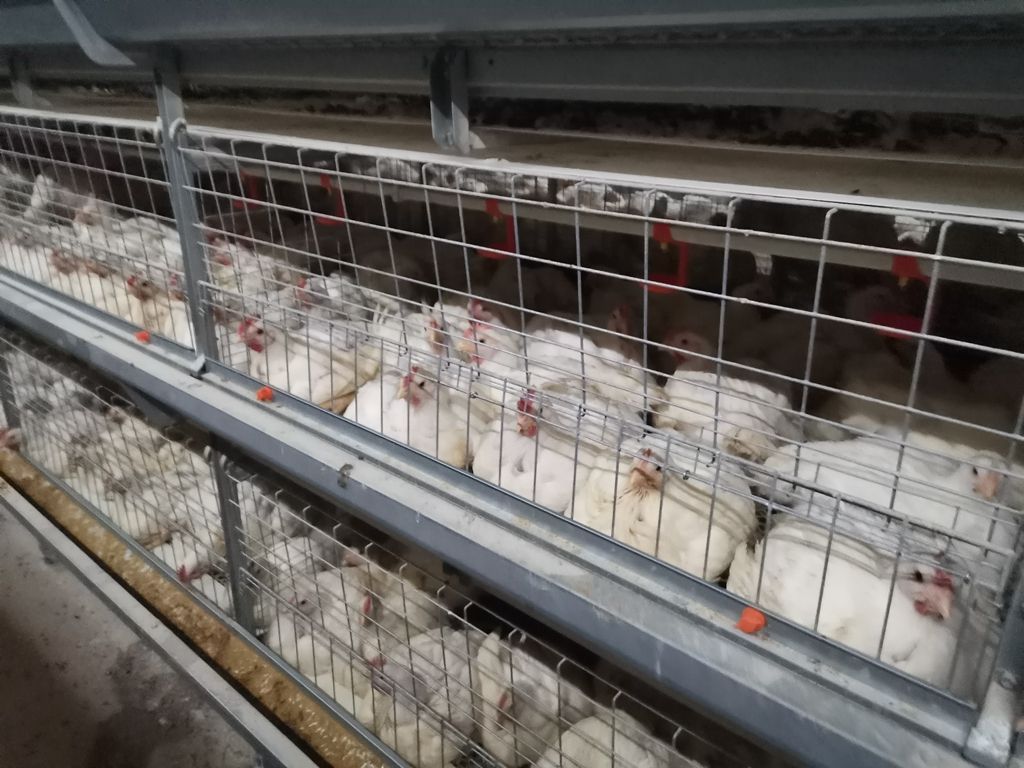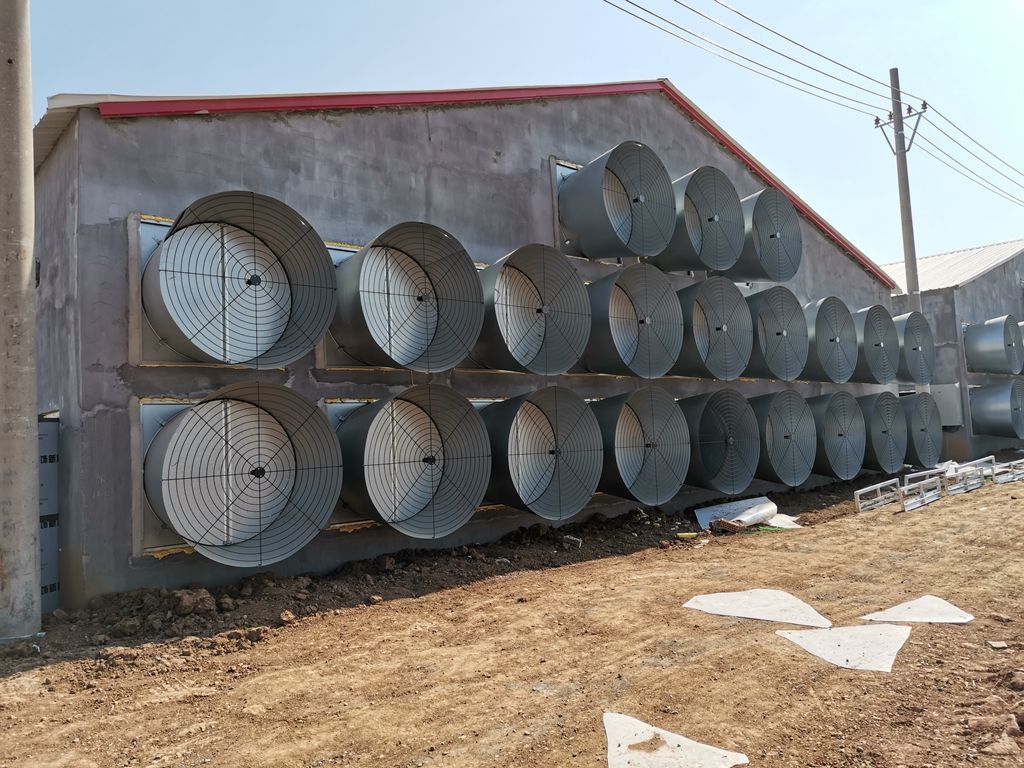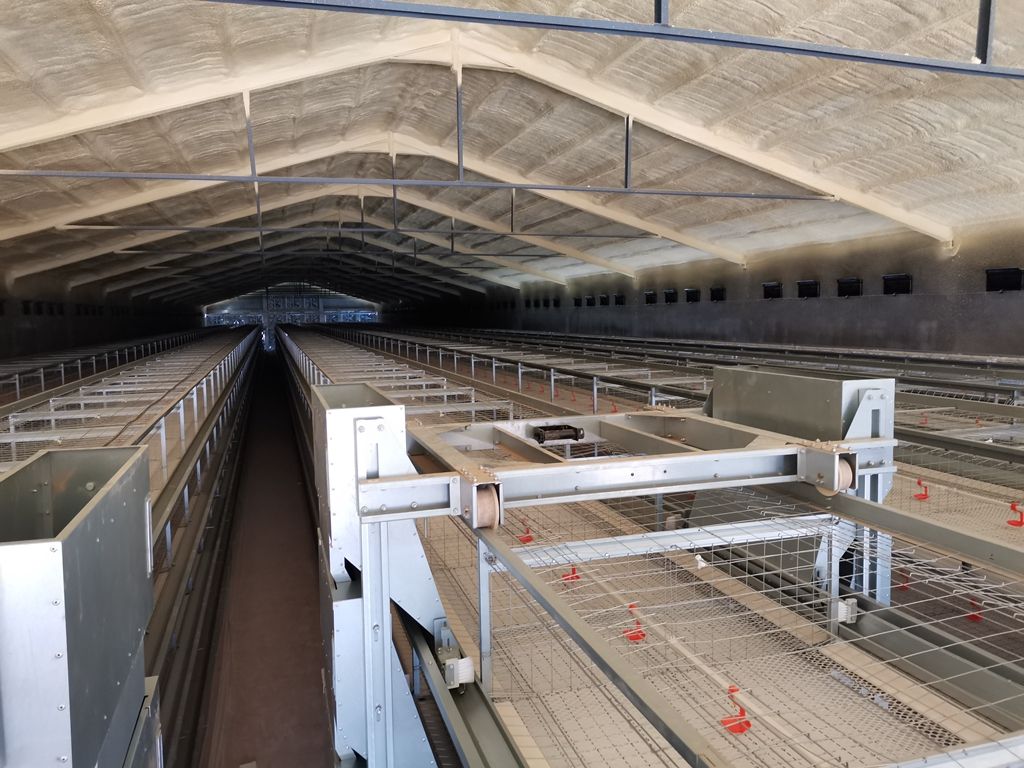Industry news
How to breed chickens in large chicken farm? Doing the following seven points is not far from success (2)
Added:2021-12-31
Continue from the previous article:How to breed chickens in large chicken farm? Doing the following seven points is not far from success (1)

Today we discuss the two factors, Ventilation and feeding.
3. Ventilation
Oxygen is an essential nutrient for humans and animals, and it is inseparable from it at all times. The purpose of ventilation is to remove the dirty exhaust air in the chicken house in time, introduce fresh air outside, and maintain the chicken house. The specified oxygen content, while reducing the dust in the air, adjust the indoor temperature and humidity. The standard for fresh air is oxygen>20%, ammonia <500px3/m3, and relative humidity<70%.
Since the oxygen content in the room cannot be measured as conveniently as the temperature, it is difficult to grasp the amount of ventilation. The general principle of ventilation is: "How much oxygen the chicken consumes must be supplemented; if there is air in, there must be air out; if there is air out, there must be air in; the amount of oxygen consumed in the room determines the size of the air exchange; the effect of strong wind is small. Ventilation rate; cold and heat do not determine ventilation, ventilation can regulate cold and heat”. However, people often use the indoor temperature as a reference for the air exchange rate, that is, the air exchange rate at high temperatures increases, and the air exchange rate decreases at low temperatures. This kind of ventilation method has great limitations and is very unscientific. They are not contradictory in summer, but contradictory in winter.
Causes of hypoxia: Due to the high body temperature, fast breathing, strong metabolism and high feeding density of broiler chickens, a large amount of harmful gases can be produced in a short period of time, which will make the air in the house dirty. In addition, because the broiler needs a very high temperature, especially in winter, when the temperature is raised with a traditional stove, a large amount of oxygen will be consumed, which will also lead to hypoxia. Assuming that the sealing of the chicken house is absolutely ideal, the oxygen content of 5000 chicken houses is about 500 kg. Burning 400 kg of coal will exhaust all the oxygen. Burning 20 kg of coal will reduce the oxygen concentration by 21%. Down to 20%.
Therefore, the oxygen consumption of the fire in the room is extremely high. In the first three days of brooding, its oxygen consumption is about 4 times that of the chicks. Of course, any chicken coop will not be sealed too well. There is always a place for air intake. At the same time, because the fire consumes oxygen, negative pressure is formed in the room, and the outside air can easily be replenished. It is just that a well-sealed house can easily lead to shortages oxygen.
From 21 days to 38 days of age, as feed intake increases, oxygen consumption also increases. In addition to the increase in metabolites, the feces produce more harmful gases. During this period, if you do not pay attention to "heat preservation and ventilation", and timely use high-quality drugs to prevent it, it is easy to develop respiratory diseases, cause mixed infection of E. coli, and make the condition worse. After 35 days of age, the feed intake is about twice that of before 21 days of age, and oxygen consumption will greatly increase. If effective measures are not taken to increase the ventilation, it is easy to induce respiratory diseases and the mortality rate is extremely high when the slaughter is out. Under the premise of heat preservation, the greater the ventilation rate, the better, but when the amount of ventilation is excessive, the temperature difference is often caused indirectly due to the large temperature difference caused by the excessive ventilation.
The ventilation in the first week of the brooding period has little to do with the season. Appropriate adjustments should be made after about a week according to the changes of the four seasons. The floor windows of the brooding rooms can be opened as supplementary air intake. It can be earlier in summer and appropriate in winter. Later and smaller (not because of the cold, but because of the wind).
Ventilation in the later period of rearing: After five weeks of age, the amount of ventilation should be gradually increased. For summer ventilation, natural ventilation is mainly used at night and mechanical ventilation is mainly used during the day. For natural ventilation, horizontal ventilation or vertical ventilation should also be selected according to the degree of coldness and heat of the weather and the amount of ventilation.
Lateral ventilation refers to the air convection formed indoors with side windows, floor windows and skylights. It has not only the upward air flow formed between the floor window and the side windows and skylights, but also the lateral air flow formed between the opposite side windows. The amount of lateral ventilation is relatively large, and the wind direction is poor. When in use, it is necessary to prevent the temperature from being too low due to excessive ventilation at four or five o'clock at night or at four or five o'clock at night. Longitudinal ventilation refers to the air convection formed by longitudinal doors or side windows. It is also commonly known as "drafting wind". Its size mainly depends on the size and direction of the outside wind. When the outdoor wind speed is high, because the wall next to the air inlet blocks the direction of the wind, the wind speed is blocked and slowed down, while the wind speed of the door or window does not change. According to the principle that the wind speed is fast and the pressure is small, and the wind speed is slow and the pressure is strong.
Positive pressure will be formed at the air inlet, the wind speed at the air inlet will increase. In the same way, negative pressure will be formed at the air outlet, and the wind will speed up. In this way, longitudinal air convection is formed indoors. When the wind direction is the same as the longitudinal direction, the indoor wind speed is fast, and when the wind direction is perpendicular to the longitudinal direction, the indoor wind speed is low. When using longitudinal ventilation, due to the high wind speed at both ends, you must pay attention to windy weather or use at night. When natural ventilation cannot meet the ventilation requirements or is difficult to control, and when it is necessary to reduce the temperature in the hot summer, mechanical ventilation should be used. Mechanical ventilation is longitudinal ventilation using the principle of negative pressure ventilation. In other words, the air near the fan is drawn out of the house by the blades of the fan, so that the air near the fan becomes thinner and the pressure is reduced, forcing the air from far away in the room to replenish it, thus forming a rapid air flow in the longitudinal direction.
Negative pressure ventilation has two advantages: First, it is more efficient than positive pressure ventilation (blower blowing). Second, it can quickly exhaust the hot air and exhaust air in the house, and can play a role in cooling when the indoor temperature is higher than the outdoor temperature. When the outdoor temperature is higher than the indoor temperature, although the temperature cannot be directly lowered, the air flow can promote the chicken .The dissipation of body heat indirectly plays a role in cooling down. Use it flexibly. When the ventilation volume is large, close the doors and windows at the near end, and open all the air inlets and doors at the far end to facilitate air intake, otherwise it will affect the effect of the ventilator. When the ventilation volume is not large, it can be turned on intermittently or individually.
4. Timing quantitative feeding:
The purpose of timing quantitative feeding is to maintain the chicken's strong appetite. Feeding should be done in stages and depending on the situation.
Feeding in the early stage of rearing: Under normal management, whether the chickens are well developed, whether the rate of dead hunting exceeds the standard, and whether the weight meets the standard, has a lot to do with the feeding method in the early stage of rearing. If feeding is not properly restricted during the brooding period: chicks will have poor skeletal development due to excessive weight gain and slow bone development, and the incidence of foot and leg disease will increase; due to imperfect visceral development and excessive weight, visceral dysplasia and sudden death will increase; Due to the undeveloped organs and long-term overload of work, the heart and kidneys fail and cause various diseases; due to poor development in the early stage and the decline in disease resistance in the later stage, it seriously affects the production performance in the later stage.
Practice has proved that reasonable feeding restriction will lead to good bone development, balanced development of various organs, and significantly reduce the load on the heart and kidneys, which lays a good foundation for good production performance in the later stage of rearing; it can effectively reduce mortality, reduce elimination rate, and improve feed utilization Rate; can increase appetite and develop a good rhythm of hunger and fullness.
This article will stop here. For related news, please click the following link



